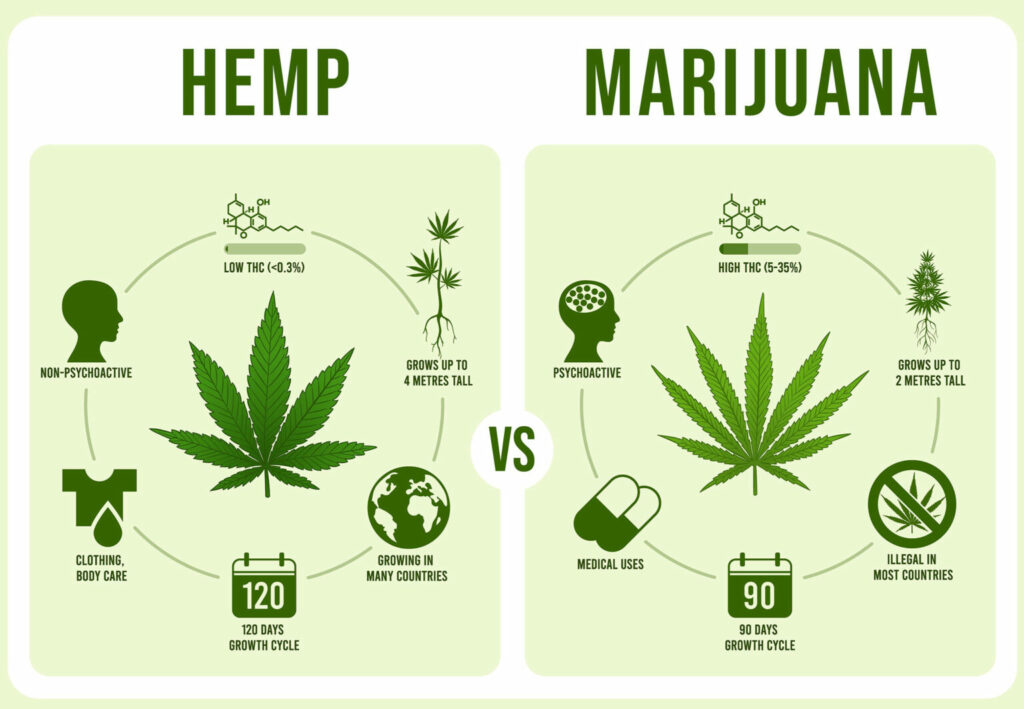Introduction
The CBD industry has experienced a remarkable surge in recent years, growing at an unprecedented rate and captivating the attention of consumers, researchers, and businesses worldwide. One of the key driving forces behind this mushrooming industry is hemp, a versatile plant known for its rich CBD content. In this comprehensive guide, we will explore the hemp explosion behind the CBD industry, examining its historical background, cultivation practices, legal status, health benefits, and future prospects.
I. Historical Background of Hemp and CBD
Ancient Origins
- Hemp’s historical significance across civilizations.
- Early uses of hemp and its association with medicinal purposes.
Modern Rediscovery
- The rediscovery of hemp’s therapeutic properties.
- Research breakthroughs in understanding CBD and its potential benefits.
- The Farm Bill of 2018 and its impact on the CBD industry.
II. Cultivation of Hemp
Varieties of Hemp
- Understanding the difference between industrial hemp and marijuana.
- High-CBD hemp strains and their significance in the CBD industry.
Cultivation Practices
- Environmental requirements for hemp cultivation.
- Soil preparation, seed selection, and propagation techniques.
- Crop management, pest control, and harvesting considerations.
Sustainable Farming and Organic Practices
- Benefits of sustainable farming methods.
- Organic cultivation practices and their impact on CBD quality.
- Certification programs for organic hemp production.
III. Legal Status of Hemp and CBD
Global Perspectives
- Variations in hemp legality across countries.
- Case studies of countries with progressive hemp and CBD regulations.
United States
- Overview of hemp legalization in the U.S.
- Regulations surrounding CBD production, distribution, and labeling.
- FDA’s stance on CBD as a dietary supplement or ingredient in food products.
IV. Health Benefits of CBD
Understanding CBD
- The endocannabinoid system and its role in maintaining homeostasis.
- Differentiating between CBD and THC.
Therapeutic Potential of CBD
- Relief from chronic pain and inflammation.
- Managing anxiety, stress, and sleep disorders.
- Potential neuroprotective effects and applications in epilepsy.
CBD in Beauty and Wellness
- CBD-infused skincare products and their benefits.
- CBD’s role in managing acne, eczema, and psoriasis.
- CBD as a supplement for relaxation and stress relief.
V. Future Prospects of the CBD Industry
Market Growth and Trends
- Current market size and projected growth of the CBD industry.
- Emerging trends in product diversification and consumer demand.
Research and Clinical Trials
- Ongoing research on CBD’s potential medical applications.
- Clinical trials and FDA-approved medications containing CBD.
Regulatory Developments
- Potential changes in regulations for CBD products.
- FDA’s role in ensuring consumer safety and product quality.
Sustainability and Environmental Impact
- Innovations in sustainable hemp cultivation practices.
- Promoting eco-friendly packaging and waste reduction in the CBD industry.
Conclusion
The mushrooming CBD industry owes much of its success to the hemp explosion that has brought this versatile plant into the spotlight. Understanding the historical context, cultivation practices, legal framework, and health benefits of hemp and CBD is crucial in navigating this burgeoning industry. As the industry continues to evolve, staying informed about future prospects and regulatory developments will enable businesses and consumers to make informed decisions in this exciting and rapidly expanding field.
VI. Safety and Quality Assurance in the CBD Industry
Quality Control Measures
- Importance of third-party lab testing for CBD products.
- Ensuring accurate labeling and potency of CBD products.
- Identifying contaminants and heavy metals in CBD extracts.
Adverse Effects and Precautions
- Common side effects of CBD and their management.
- Drug interactions and precautions for specific medical conditions.
- Importance of consulting healthcare professionals before CBD use.
Consumer Education and Awareness
- Promoting responsible CBD usage and dosage guidelines.
- Providing transparent information on product sourcing and manufacturing.
- Raising awareness about potential risks and misconceptions surrounding CBD.
VII. CBD in Different Industries
CBD in Food and Beverages
- Overview of CBD-infused food and beverage products.
- Legal considerations and regulations in the food industry.
- Consumer demand and emerging culinary trends incorporating CBD.
CBD in Healthcare and Pharmaceuticals
- FDA-approved CBD medications and their applications.
- Research on CBD’s potential in treating specific medical conditions.
- Challenges and opportunities for CBD integration in the healthcare sector.
CBD in Beauty and Skincare
- Exploring the popularity of CBD-infused beauty products.
- Benefits of CBD for skincare and anti-aging properties.
- Innovative formulations and future possibilities in the beauty industry.
VIII. Hemp as a Sustainable Resource
Environmental Benefits of Hemp Cultivation
- Carbon sequestration and soil remediation capabilities of hemp.
- Reducing reliance on synthetic materials through hemp-derived alternatives.
- Sustainable farming practices for minimizing environmental impact.
Hemp-Based Products
- Hemp as a source of biofuels, textiles, and building materials.
- Exploring the versatility of hemp-derived products and their eco-friendly attributes.
- Opportunities for circular economy models and waste reduction.
Social and Economic Implications
- Creating job opportunities and economic growth through hemp cultivation.
- Hemp as a viable crop for small-scale and sustainable farming initiatives.
- Potential benefits for rural communities and marginalized populations.
Conclusion
The CBD industry’s exponential growth can be attributed to the hemp explosion, which has brought hemp-derived CBD into the mainstream. Understanding the importance of safety, quality assurance, and responsible usage is vital for both consumers and businesses operating in this industry. Moreover, recognizing the diverse applications of CBD in various sectors, including food, healthcare, and beauty, opens up new opportunities for innovation and market expansion. Furthermore, embracing hemp as a sustainable resource holds tremendous potential for environmental and socio-economic benefits. As the CBD industry continues to evolve, staying informed and adaptable will be key to harnessing the vast potential of this ever-expanding industry.

